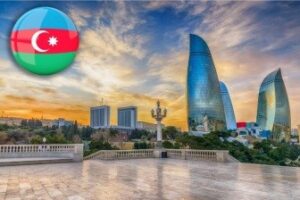Environmental Protection as Part of Uzbekistan’s Sustainable Development Strategy

Uzbekistan has made environmental protection a central pillar of its sustainable development strategy, recognizing that a healthy environment is essential for national prosperity, public well-being, and global stability. Over the past decade, the country has taken significant steps to integrate sustainable development principles into its national programs and policies, actively contributing to international efforts to combat climate change, reverse ecological degradation, and transition toward a greener economy.
Uzbekistan’s commitment to environmental protection was firmly established when the country ratified the Paris Agreement in 2016. By doing so, it pledged to reduce greenhouse gas emissions and implement strategies to adapt to the adverse effects of climate change. This global commitment laid the foundation for numerous reforms, laws, and policies aimed at fostering a sustainable future.
In a major development, President Shavkat Mirziyoyev announced on November 20, 2024, that the year 2025 would be officially designated as the Year of Environmental Protection and Green Economy in Uzbekistan. This historic declaration underscores a national vision to elevate environmental priorities to the highest level of governance. The government was tasked with drafting a comprehensive national program focused on implementing green technologies, conserving water, expanding green spaces, addressing the consequences of the Aral Sea disaster, improving waste management systems, and enhancing public health.
Uzbekistan has initiated two major international environmental projects in partnership with the United Nations Development Program (UNDP), funded by the Global Environment Facility (GEF) with a total budget of $6.5 million. Spearheaded by the Ministry of Ecology, Environmental Protection, and Climate Change, these projects are set to run until 2030. Their core aim is to advance the green economy by promoting biodiversity conservation, sustainable resource management, and innovation in environmental governance. A key area of focus is waste management. Uzbekistan is transitioning to a circular economy through initiatives embracing the “zero waste” principle. The government is establishing infrastructure for efficient waste collection, recycling, and energy recovery, minimizing environmental damage while creating green jobs and promoting responsible consumption.
The Aral Sea Crisis
Uzbekistan’s environmental advocay would be incomplete without addressing the Aral Sea disaster. one of the world’s most catastrophic ecological collapses. Once the fourth-largest inland lake, the Aral Sea has been reduced to a fraction of its original size, triggering desertification, biodiversity loss, toxic dust storms, and dire socio-economic consequences. Entire communities have been uprooted, agricultural productivity has plummeted, and public health has deteriorated due to airborne pollutants from the exposed seabed.
President Shavkat Mirziyoyev has made the revival of the Aral Sea region a national and regional priority. Speaking at COP29, he described the disaster as a “catastrophic environmental impact” with transboundary implications, calling for collective international action to address interconnected challenges like land degradation, water scarcity, and climate vulnerability. Uzbekistan’s leadership in this area is evident through the establishment of the International Innovation Center for the Aral Sea Region (IICASR). This pioneering institution blends scientific research, technological innovation, and sustainable development tailored to the unique challenges of the region. The center supports climate-resilient agriculture, water-efficient irrigation, and afforestation while also housing gene banks and biotechnological research facilities. These initiatives aim to transform the Aral Sea region into a model for sustainable recovery.
The Green Rehabilitation Investment Project (GRIP)
Among the most impactful efforts is the Green Rehabilitation Investment Project (GRIP), implemented in partnership with the Global Green Growth Institute (GGGI). From 2021 to 2024, GRIP demonstrated the transformative power of climate-smart investments. It rehabilitated over 800 hectares of degraded land, improved water-use efficiency to 95%, and planted more than 21,000 trees capable of sequestering over 11,000 tons of CO₂ over the next 18 years. More than 17,000 people, including women, youth, and marginalized farmers, received training in green jobs and climate-resilient agricultural techniques. Innovative agro-models—such as microgreen production for women with disabilities, drip-irrigated greenhouses, and forest-belt-protected orchards—provided sustainable income opportunities while promoting ecological recovery.
The project also proved that environmental restoration can attract significant investment. It mobilized more than 2.25 trillion Uzbek soums (around $200 million USD), including $50 million in climate-resilient agribusiness financing. This success has solidified the business case for green development in Uzbekistan.
Uzbekistan is also emerging as a leader in environmental diplomacy. At COP29, President Mirziyoyev advocated for stronger international cooperation on climate action, particularly in the context of Central Asia’s shared ecosystems. He highlighted the need to protect transboundary water resources, which are under growing stress from climate change and unsustainable development. President Mirziyoyev proposed the establishment of an International Centre for Climate Loss and Damage Assessment to institutionalize global accountability in environmental governance. This proposed body would provide technical support and financial compensation to countries most affected by climate disasters. Additionally, Uzbekistan is advocating for a UN Declaration on the Ecological Safety of River Ecosystems, a move aimed at preventing future environmental catastrophes like the Aral Sea disaster.
Uzbekistan’s environmental initiatives are not merely symbolic, they are well rooted in clear policies, measurable outcomes, and international cooperation. As the country moves forward with its ambitious 2025 agenda for environmental protection and green economy, it sets an example for other developing nations for sustainable development. As global climate challenges grow more urgent, Uzbekistan’s experience offers a hopeful vision of what is possible when environmental protection becomes an integral part of national policy.


